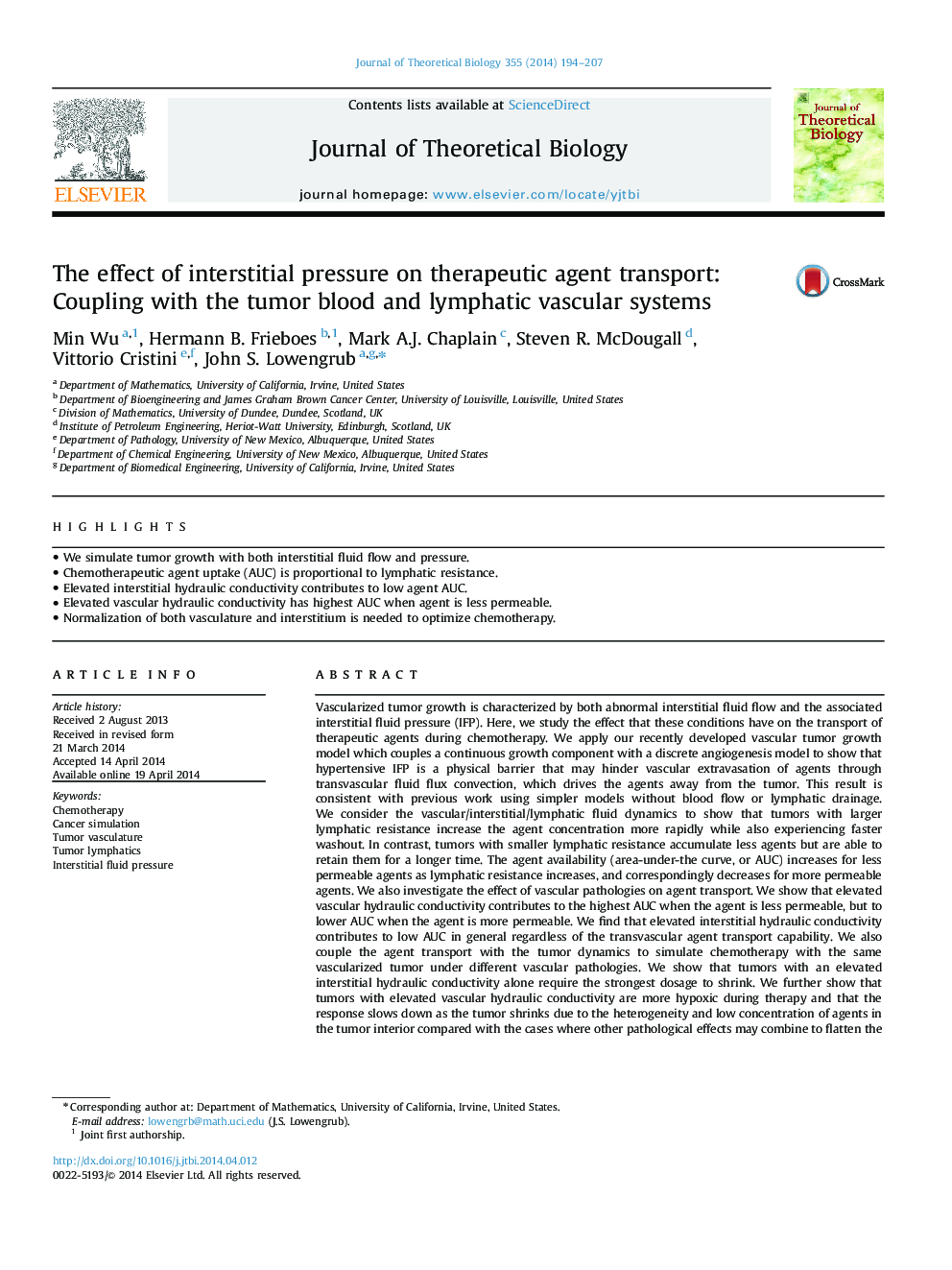| کد مقاله | کد نشریه | سال انتشار | مقاله انگلیسی | نسخه تمام متن |
|---|---|---|---|---|
| 6370510 | 1623855 | 2014 | 14 صفحه PDF | دانلود رایگان |
عنوان انگلیسی مقاله ISI
The effect of interstitial pressure on therapeutic agent transport: Coupling with the tumor blood and lymphatic vascular systems
ترجمه فارسی عنوان
اثر فشار بینابینی بر روی انتقال عامل درمانی: اتصال با خون تومور و سیستم عروق لنفاوی
دانلود مقاله + سفارش ترجمه
دانلود مقاله ISI انگلیسی
رایگان برای ایرانیان
کلمات کلیدی
موضوعات مرتبط
علوم زیستی و بیوفناوری
علوم کشاورزی و بیولوژیک
علوم کشاورزی و بیولوژیک (عمومی)
چکیده انگلیسی
Vascularized tumor growth is characterized by both abnormal interstitial fluid flow and the associated interstitial fluid pressure (IFP). Here, we study the effect that these conditions have on the transport of therapeutic agents during chemotherapy. We apply our recently developed vascular tumor growth model which couples a continuous growth component with a discrete angiogenesis model to show that hypertensive IFP is a physical barrier that may hinder vascular extravasation of agents through transvascular fluid flux convection, which drives the agents away from the tumor. This result is consistent with previous work using simpler models without blood flow or lymphatic drainage. We consider the vascular/interstitial/lymphatic fluid dynamics to show that tumors with larger lymphatic resistance increase the agent concentration more rapidly while also experiencing faster washout. In contrast, tumors with smaller lymphatic resistance accumulate less agents but are able to retain them for a longer time. The agent availability (area-under-the curve, or AUC) increases for less permeable agents as lymphatic resistance increases, and correspondingly decreases for more permeable agents. We also investigate the effect of vascular pathologies on agent transport. We show that elevated vascular hydraulic conductivity contributes to the highest AUC when the agent is less permeable, but to lower AUC when the agent is more permeable. We find that elevated interstitial hydraulic conductivity contributes to low AUC in general regardless of the transvascular agent transport capability. We also couple the agent transport with the tumor dynamics to simulate chemotherapy with the same vascularized tumor under different vascular pathologies. We show that tumors with an elevated interstitial hydraulic conductivity alone require the strongest dosage to shrink. We further show that tumors with elevated vascular hydraulic conductivity are more hypoxic during therapy and that the response slows down as the tumor shrinks due to the heterogeneity and low concentration of agents in the tumor interior compared with the cases where other pathological effects may combine to flatten the IFP and thus reduce the heterogeneity. We conclude that dual normalizations of the micronevironment - both the vasculature and the interstitium - are needed to maximize the effects of chemotherapy, while normalization of only one of these may be insufficient to overcome the physical resistance and may thus lead to sub-optimal outcomes.
ناشر
Database: Elsevier - ScienceDirect (ساینس دایرکت)
Journal: Journal of Theoretical Biology - Volume 355, 21 August 2014, Pages 194-207
Journal: Journal of Theoretical Biology - Volume 355, 21 August 2014, Pages 194-207
نویسندگان
Min Wu, Hermann B. Frieboes, Mark A.J. Chaplain, Steven R. McDougall, Vittorio Cristini, John S. Lowengrub,
